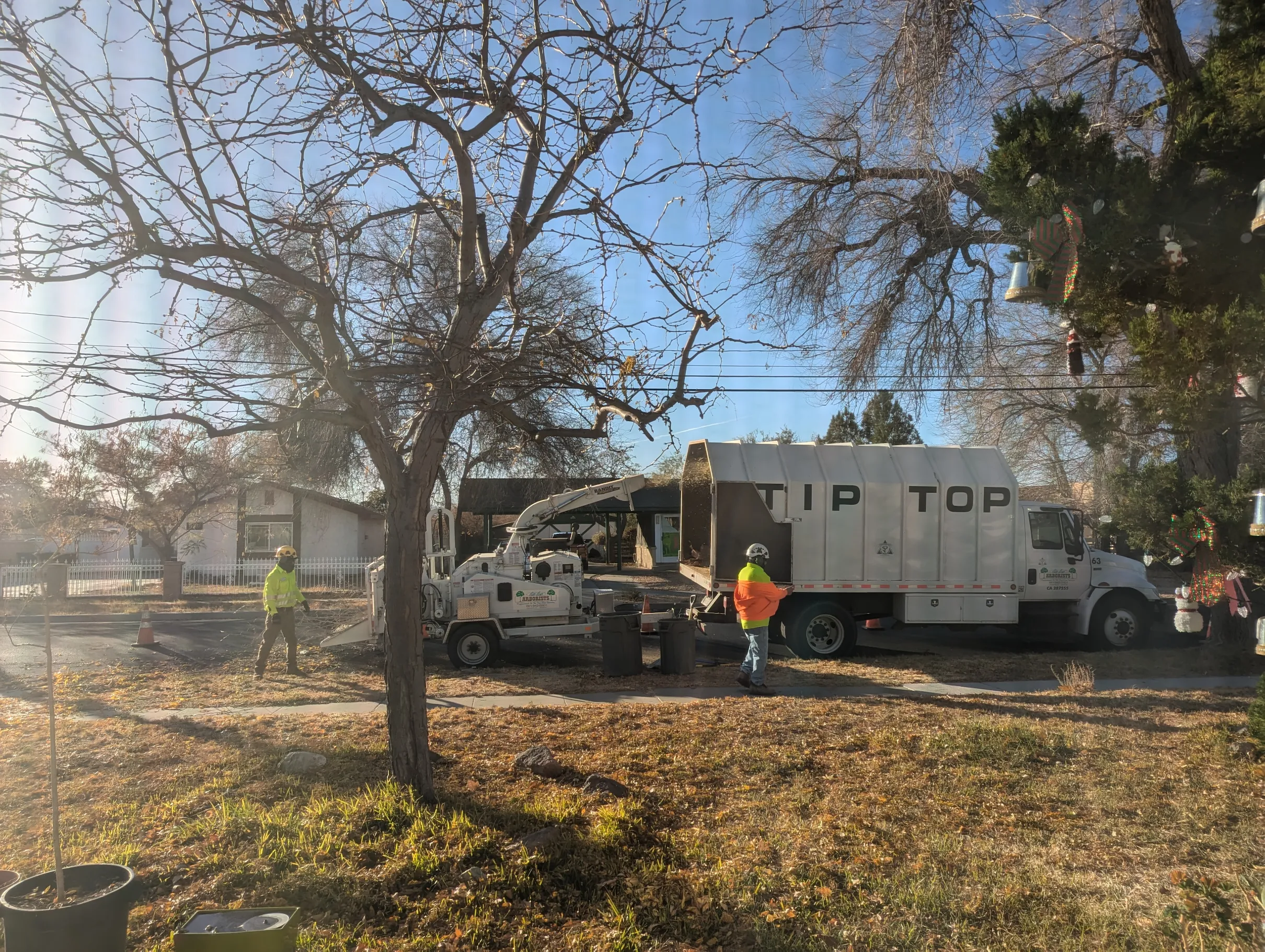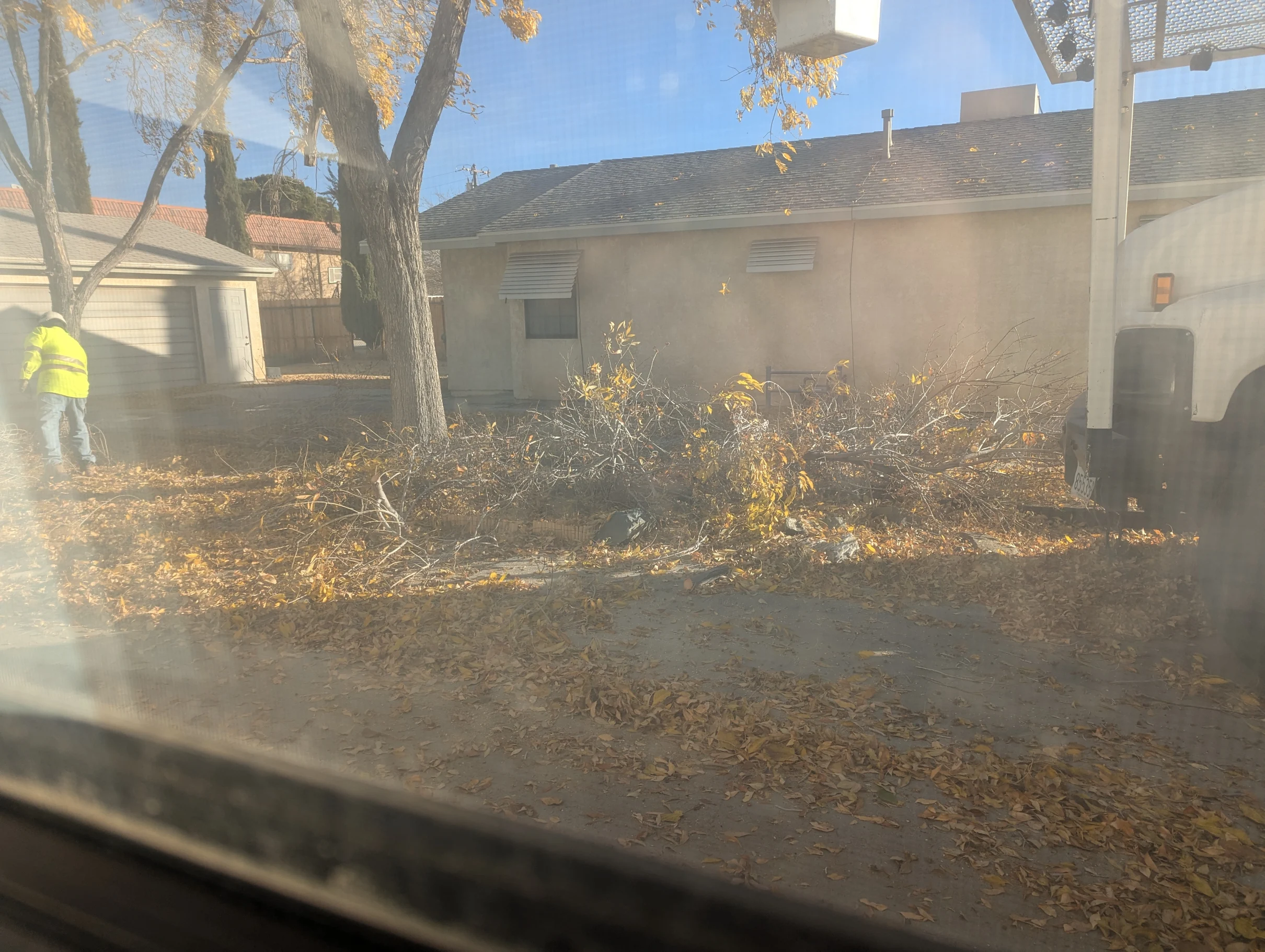Professional Tree Removal & Arboriculture Services Case Study
Tip Top Arborists: Excellence in Tree Care and Safety



Sonia Deras – Local Guide
“They help me out to remove a rotten tree in the back yard and tree trimming on other 3 trees around my house. Owner is very polite and helpful, employees were exceptional. Just very satisfied with their job “
4 months ago • 31 reviews • 230 photos
Executive Summary
Professional Tree Removal Services: This comprehensive case study examines a multi-faceted tree care project completed by Tip Top Arborists, showcasing their expertise in hazardous tree removal, crown management, and professional arboriculture services. The project involved the complete removal of a diseased tree and strategic pruning of three additional mature trees, demonstrating advanced ISA certified techniques and industry-leading safety protocols.
The successful completion of this project highlights the critical importance of professional tree care services, proper equipment utilization, and adherence to International Society of Arboriculture (ISA) standards in residential arboriculture management.
Project Overview & Initial Assessment
Site Conditions & Tree Health Assessment
The project began with a comprehensive tree health assessment conducted by ISA certified arborists from Tip Top Arborists. The evaluation identified a severely compromised tree in the client’s backyard showing advanced signs of decay and structural instability. Professional tree risk assessment protocols revealed multiple indicators of tree failure risk, including:
- Extensive trunk decay: Visual inspection revealed significant wood rot extending through the main trunk structure
- Root system compromise: Evidence of root rot and structural root damage affecting tree stability
- Crown deterioration: Dead and dying branches throughout the canopy indicating systemic decline
- Pest and disease indicators: Signs of secondary infestations common in stressed and dying trees
The three additional trees required strategic crown management through professional pruning techniques. These mature specimens exhibited healthy primary structure but required selective branch removal and crown reduction to maintain optimal health, improve air circulation, and reduce potential hazards from overextended branches.
Professional Tree Removal Process & Safety Protocols
Pre-Removal Planning & Risk Assessment
Professional tree removal requires meticulous planning and adherence to industry safety standards. The Tip Top Arborists team conducted a thorough site evaluation, identifying potential hazards including proximity to structures, overhead power lines, and underground utilities. The removal strategy incorporated OSHA compliance standards and ISA best management practices.
The team established a comprehensive safety perimeter, positioned professional-grade equipment including aerial lift platforms and specialized rigging systems, and implemented a systematic dismantling approach to ensure controlled removal of all tree components.
Advanced Equipment & Techniques
The removal process utilized state-of-the-art arboricultural equipment designed for safe and efficient tree removal operations:
- Aerial Lift Platforms: Professional forestry bucket trucks providing secure elevated access for precise cutting operations
- Specialized Chainsaw Equipment: Professional-grade chainsaws with safety features and appropriate bar lengths for controlled sectioning
- Rigging Systems: Advanced rope and pulley systems for controlled lowering of heavy tree sections
- Wood Chipping Technology: Industrial-grade wood chippers for immediate debris processing and site cleanup
- Stump Grinding Equipment: Professional stump grinders for complete root system removal and site restoration
Systematic Dismantling Process
The tree removal followed a methodical approach beginning with crown reduction and progressing through controlled sectioning of the main trunk. Each cut was strategically planned to maintain balance and prevent property damage. The process included:
Phase 1 – Crown Dismantling: Systematic removal of branches beginning with smaller limbs and progressing to major scaffold branches. Each section was carefully rigged and lowered to prevent ground impact damage.
Phase 2 – Trunk Sectioning: The main trunk was sectioned into manageable pieces using precision cutting techniques. Advanced rigging systems ensured controlled descent of each section.
Phase 3 – Stump Removal: Complete stump grinding eliminated the remaining root system, allowing for proper site restoration and preventing potential regrowth or pest harboring.
Advanced Pruning Techniques & Crown Management
ISA Certified Pruning Standards
The three remaining trees received professional pruning services following International Society of Arboriculture guidelines. The pruning approach incorporated multiple specialized techniques designed to enhance tree health, structural integrity, and aesthetic appeal.
Professional arborists employed selective pruning methods including crown cleaning, crown thinning, and targeted crown reduction to achieve optimal results while maintaining the natural growth patterns and structural stability of each tree.
Crown Management Techniques
Crown Cleaning: Removal of dead, diseased, and damaged branches throughout the canopy. This process eliminates potential hazards while improving overall tree health and appearance.
Crown Thinning: Selective removal of branches to improve light penetration and air circulation. This technique reduces wind resistance and promotes healthy interior growth.
Crown Reduction: Strategic reduction of tree height and spread through precise cutting techniques. This method maintains natural tree form while addressing clearance issues and reducing storm damage potential.
Structural Pruning: Enhancement of tree architecture through selective removal of competing leaders and development of strong scaffold branch systems.
Seasonal Timing & Best Practices
Professional tree pruning requires careful consideration of seasonal timing to maximize tree health benefits and minimize stress. The Tip Top Arborists team scheduled this project during the optimal dormant season period, typically between late fall and early spring, when trees are less susceptible to pest infestations and disease transmission.
Dormant season pruning allows trees to allocate energy toward wound healing and new growth development during the subsequent growing season. This timing strategy minimizes sap loss, reduces attraction to wood-boring insects, and optimizes the tree’s natural healing response.
Safety Protocols & Industry Compliance
OSHA Standards & Worker Safety
All operations adhered to Occupational Safety and Health Administration (OSHA) standards for tree care operations. The team utilized comprehensive personal protective equipment (PPE) including cut-resistant chaps, safety helmets with face shields, hearing protection, and fall protection systems for aerial work.
Professional training in hazard recognition and emergency response procedures ensured safe operation throughout the project duration. Regular safety meetings and equipment inspections maintained the highest standards of workplace safety.
Insurance & Liability Protection
Comprehensive insurance coverage protected both the client and work crew throughout the project. Professional liability insurance, general liability coverage, and workers’ compensation protection provided complete peace of mind for all parties involved.
Bonded and licensed arborists ensured compliance with local regulations and industry standards, demonstrating the professional commitment to quality and accountability that distinguishes certified tree care professionals.
Project Results & Long-term Benefits
Immediate Safety Improvements
The removal of the hazardous tree eliminated a significant safety risk to the property and surrounding area. The diseased tree posed potential threats including branch failure, complete tree collapse, and property damage during severe weather events.
Professional pruning of the remaining trees reduced wind resistance and eliminated weak or overextended branches that could have posed future hazards. The strategic crown management improved overall tree stability and reduced the likelihood of storm damage.
Enhanced Property Value & Aesthetics
Professional tree care services significantly enhance property value through improved landscaping aesthetics and reduced liability risks. Well-maintained trees contribute to curb appeal and demonstrate responsible property stewardship to potential buyers and neighbors.
The strategic pruning enhanced the natural beauty of the remaining trees while promoting healthy growth patterns and longevity. Proper crown management ensures these trees will continue providing environmental benefits including shade, air purification, and wildlife habitat for years to come.
Environmental & Health Benefits
Professional tree care contributes to environmental sustainability through several mechanisms:
- Carbon Sequestration: Healthy trees continue absorbing atmospheric carbon dioxide throughout their lifespan
- Air Quality Improvement: Trees filter pollutants and produce oxygen, contributing to healthier air quality
- Stormwater Management: Tree canopies intercept rainfall and reduce runoff, preventing erosion and flooding
- Urban Heat Island Reduction: Strategic tree placement and maintenance moderate local temperatures
- Wildlife Habitat: Properly maintained trees provide nesting sites and food sources for various species
Professional Expertise & Certification Standards
ISA Certified Arborist Qualifications
The International Society of Arboriculture (ISA) certification represents the gold standard in professional tree care expertise. ISA Certified Arborists demonstrate comprehensive knowledge in tree biology, diagnosis, maintenance practices, safety procedures, and industry regulations through rigorous examination and continuing education requirements.
Certification requirements include a minimum of three years of full-time arboriculture experience or equivalent education, successful completion of comprehensive examinations covering all aspects of tree care, and ongoing professional development to maintain current certification status. This ensures clients receive services from qualified professionals with current knowledge of best practices and safety standards.
Specialized Equipment & Technology
Modern arboriculture requires specialized equipment designed specifically for tree care operations. Professional-grade aerial lift platforms, including forestry bucket trucks and tracked spider lifts, provide safe access to elevated work areas while maintaining stability and maneuverability in challenging terrain.
Advanced rigging systems incorporating high-strength synthetic ropes, precision pulleys, and load-rated hardware enable controlled removal of large tree sections without property damage. Professional chainsaws with safety features, appropriate guide bar lengths, and specialized cutting chains ensure efficient and safe cutting operations.
Industry Standards & Continuing Innovation
ANSI A300 Standards Compliance
American National Standards Institute (ANSI) A300 standards provide comprehensive guidelines for tree care operations, including pruning, fertilization, and tree support systems. These nationally recognized standards ensure consistent, professional service delivery across the arboriculture industry.
Compliance with ANSI A300 standards demonstrates commitment to professional excellence and provides clients with confidence in service quality and methodology. Regular updates to these standards incorporate latest research findings and technological advances in tree care practices.
Environmental Stewardship & Sustainability
Professional arboriculture emphasizes environmental stewardship through sustainable practices including integrated pest management, organic soil health improvement, and native species promotion. These approaches minimize environmental impact while maximizing long-term tree health and ecosystem benefits.
Sustainable tree care practices include utilization of removed wood materials through recycling and repurposing, implementation of soil conservation techniques, and promotion of biodiversity through strategic species selection and habitat enhancement.
Client Satisfaction & Service Excellence
Exceptional Customer Service Standards
The client testimonial highlights several key factors that distinguish professional tree care services: courteous and helpful owner interaction, exceptional employee performance, and overall satisfaction with completed work. These elements reflect the comprehensive approach to customer service that characterizes reputable arboriculture companies.
Professional communication throughout the project lifecycle, from initial consultation through project completion, ensures client understanding and satisfaction. Clear explanations of recommended services, transparent pricing, and reliable project timelines contribute to positive client experiences.
Quality Assurance & Follow-up Services
Professional tree care companies provide comprehensive quality assurance including post-project inspections, warranty coverage on performed services, and ongoing maintenance recommendations. This commitment to long-term client satisfaction demonstrates professional accountability and service excellence.
Educational components including tree care recommendations, watering guidelines, and future maintenance scheduling empower clients to make informed decisions about ongoing tree health management.
Conclusion & Professional Recommendations
This comprehensive case study demonstrates the critical importance of professional tree care services in maintaining property safety, environmental health, and aesthetic value. The successful completion of hazardous tree removal and strategic crown management by Tip Top Arborists showcases the expertise, equipment, and safety protocols required for professional arboriculture operations.
The integration of ISA certified techniques, OSHA safety compliance, and state-of-the-art equipment ensures optimal results while minimizing risks to personnel and property. Client satisfaction, as evidenced by the positive testimonial, reflects the professional standards and customer service excellence that distinguish qualified tree care providers.
For property owners facing similar tree care challenges, this case study emphasizes the value of engaging certified arborists who possess the knowledge, equipment, and experience necessary for safe and effective tree management. Professional tree care represents an investment in property value, safety, and environmental stewardship that provides long-term benefits for property owners and communities.
For professional tree care services that prioritize safety, quality, and customer satisfaction, contact the certified arborists at Tip Top Arborists for consultation and service estimates.
Professional References & Standards
For additional information on professional arboriculture standards and certification requirements, visit the
International Society of Arboriculture
official website for comprehensive resources on tree care best practices and professional development opportunities.
